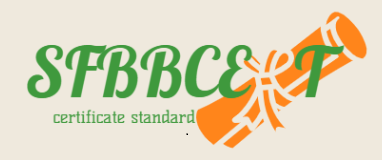
Ensuring food safety is one of the most fundamental aspects of protecting consumer health and reducing the risk of microbial and chemical contamination. From sourcing raw ingredients to delivering the final meal to the table, each step plays a vital role in determining the quality and safety of food.
Adhering to international standards such as SFBB (Safer Food, Better Business) and obtaining certifications like SFBBCERT can significantly increase consumer trust and reduce legal liability risks.
In this article, we’ll explore 7 essential stages for maintaining food safety from source to consumption, along with practical tips, FAQs, and valuable recommendations for restaurants and food service businesses.
Step 1: Choosing Safe and Certified Food Ingredients
The first step toward ensuring food safety is purchasing from reliable, health-inspected suppliers. Always check expiration and production dates, in-store storage conditions, and make sure packaging is intact and undamaged.
Sourcing ingredients from vendors who hold valid health and safety certifications such as SFBBCERT is a proactive risk-reduction measure. These certifications reflect adherence to frameworks like SFBB during food sourcing.
Step 2: Safe Transportation and Storage of Raw Materials
After purchase, food items must be transported at the correct temperature using clean, sealed containers. For perishable items such as meat, dairy, and seafood, it is essential to use portable refrigerators or insulated boxes.
Poor transport conditions can rapidly increase bacterial growth. That’s why temperature control from purchase to preparation is a cornerstone of food safety systems like SFBB.
Step 3: Proper Washing and Sanitization
All fruits, vegetables, and food contact surfaces should be thoroughly washed and sanitized before use—especially when it comes to raw produce. Surfaces like cutting boards, sinks, and utensils must be regularly cleaned and disinfected.
Following these basic hygiene practices greatly reduces the risk of cross-contamination, which is a key area of focus in certification programs like SFBBCERT.
Step 4: Hygienic Food Preparation
This stage requires special attention to prevent cross-contamination—for example, when bacteria from raw meat contaminate ready-to-eat items like chopped vegetables.
Use separate cutting boards for raw and cooked foods, wash hands and tools frequently, and follow strict hygiene protocols. These are essential parts of SFBB training and SFBBCERT certification requirements.
Proper training of kitchen staff in these principles can significantly reduce food safety risks.
Step 5: Cooking at Safe Internal Temperatures
Cooking is a critical step in eliminating harmful bacteria. Foods like meat, poultry, and fish must be cooked to safe internal temperatures. Use a food thermometer in professional kitchens to ensure precise temperature control.
This practice is a requirement in food safety audits and is emphasized by both SFBB guidelines and SFBBCERT standards.
Step 6: Proper Storage of Cooked Food
Once cooked, food must be kept at safe temperatures—above 63°C or below 5°C. Leftovers should not be kept at room temperature for more than two hours.
Utilize commercial refrigerators, sealed containers, and label each item with production and storage time—as recommended by SFBB standards.
Proper documentation of cooking times, expiration dates, and storage methods is also a key requirement for facilities seeking SFBBCERT certification.
Step 7: Safe Serving to the Consumer
Finally, food must be served using clean dishes, washed hands, and sanitized equipment. Whether you’re a restaurant, catering service, or home-based food business, maintaining hygiene at this last stage enhances customer trust and satisfaction.
Certifications like SFBBCERT also demonstrate your systematic commitment to food hygiene and safety, boosting your business reputation.
Additional Tips for Restaurants and Food Service Businesses
Provide SFBB-based food safety training for all staff
Log and monitor temperatures of fridges, freezers, and cooked foods daily
Assign an internal food safety supervisor for daily process control
Use sanitation checklists for regular internal audits
Prepare the necessary documentation for obtaining certifications like SFBBCERT
Final Thoughts
Food safety is a serious, multi-step responsibility. From ingredient sourcing to serving the final dish, every stage must be managed with proper hygiene and control. Frameworks like SFBB provide practical guidance to implement effective safety protocols.
Obtaining certifications like SFBBCERT not only proves your commitment to safety compliance but also acts as a powerful marketing tool to attract and retain customers.
By following these straightforward yet essential steps, food businesses can confidently protect consumer health, gain customer trust, and elevate their market position.

No comment